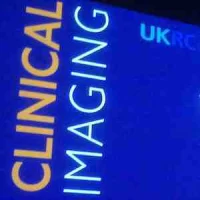Simulation has a key role in training interventional radiologists, said Prof. Bartal from Israel, speaking this week at the Cardiovascular and Interventional Radiology Society of Europe (CIRSE) Congress in Glasgow. Follow the principle of “see one, simulate one, do one”, he explained. Simulating a procedure before carrying it out on the patient can only improve safety and effectiveness.
Bartal explained that simulation has a long history in training professionals, such as pilots, who perform precise cognitive and physical tasks in high risk environments. Interventional radiologists are expected to have a deep clinical background and high technical skills. These skills have to be constantly reevaluated and updated, preferably on a case to case basis. The only concept that meets these requirements is medical simulation, he added.
Bartal quoted Einstein: “We cannot solve our problems with the same thinking we used when we created them." Make mistakes on machines, not on patients, he added. Use of simulators reduces the procedure time on patient, reduces radiation exposure and use of contrast media, and assists in finding the working projection and selecting the appropriate devices and tools.
Simulation can be performed under the guidance of a mentor or in a self-directed mode, with performance data being provided by the simulation. Endovascular simulators can be a game changer for interventional radiologists. In the United States the Society for Cardiovascular Angiography and Interventions has a core curriculum that includes a set of standardised cases, which are available on all simulation platforms and they have initiated large scale studies to evaluate the impact of simulation. Bartal considers that simulation will take on a larger role, but that currently it lacks a large body of evidence for its use. Using a simulator makes a difference in how endovascular interventions are planned and performed.
Using simulation has potential advantages. It can decrease procedure and fluoroscopy time, lead to less radiation exposure, reduce contrast media volume and usage of tools, predefine optimal C-arm angulations, reduce complication rate, improve the decision making process, enhance confidence in real procedures and increase the library of cases (teaching files). Simulation assists in the introduction of and practice with specific devices.
Bartal acknowledged the challenges. In most teaching hospitals residents and fellows are trained bypically by chance. If they are lucky to be in the right institution with appropriate trainers and access to relevant material. Computer-based simulation training is a safe substitute.
Bartal looked to potential future developments. This could include training in radiation protection skills in patient protection and personnel protection and reduce irrational fear of radiation. It can change the image-guided interventionalists behaviour, and fight PACS fatigue and musculoskeletal problems.
Bartal concluded:
Bartal explained that simulation has a long history in training professionals, such as pilots, who perform precise cognitive and physical tasks in high risk environments. Interventional radiologists are expected to have a deep clinical background and high technical skills. These skills have to be constantly reevaluated and updated, preferably on a case to case basis. The only concept that meets these requirements is medical simulation, he added.
Bartal quoted Einstein: “We cannot solve our problems with the same thinking we used when we created them." Make mistakes on machines, not on patients, he added. Use of simulators reduces the procedure time on patient, reduces radiation exposure and use of contrast media, and assists in finding the working projection and selecting the appropriate devices and tools.
Simulation can be performed under the guidance of a mentor or in a self-directed mode, with performance data being provided by the simulation. Endovascular simulators can be a game changer for interventional radiologists. In the United States the Society for Cardiovascular Angiography and Interventions has a core curriculum that includes a set of standardised cases, which are available on all simulation platforms and they have initiated large scale studies to evaluate the impact of simulation. Bartal considers that simulation will take on a larger role, but that currently it lacks a large body of evidence for its use. Using a simulator makes a difference in how endovascular interventions are planned and performed.
Using simulation has potential advantages. It can decrease procedure and fluoroscopy time, lead to less radiation exposure, reduce contrast media volume and usage of tools, predefine optimal C-arm angulations, reduce complication rate, improve the decision making process, enhance confidence in real procedures and increase the library of cases (teaching files). Simulation assists in the introduction of and practice with specific devices.
Bartal acknowledged the challenges. In most teaching hospitals residents and fellows are trained bypically by chance. If they are lucky to be in the right institution with appropriate trainers and access to relevant material. Computer-based simulation training is a safe substitute.
Bartal looked to potential future developments. This could include training in radiation protection skills in patient protection and personnel protection and reduce irrational fear of radiation. It can change the image-guided interventionalists behaviour, and fight PACS fatigue and musculoskeletal problems.
Bartal concluded:
- Simulation provides hands on training in a safe and controlled environment
- Simulation provides a realistic and accurate behaviour of internal organs and tissues
- Simulation allows standard training and practice of real procedures using actual case scenarios and accurate life anatomies
Latest Articles
CIRSE 2014, interventional radiology, Medical simulation
Simulation has a key role in training interventional radiologists, said Prof. Bartal from Israel, speaking this week at the Cardiovascular and Intervention...










